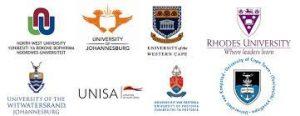historically black universities in south africa 2024-2025
historically black universities in south africa 2024-2025

In a recent article about Gloria Sekwena’s tragic death in a stampede at the University of Johannesburg, According to the Guardian of London, “Apartheid barred all but a small percentage of the country’s black majority from attending university. When white minority rule ended in 1994, university doors were opened to all.”
This claim would have been accepted as fact by the British readers of that publication. It would have confirmed long-held beliefs about the horrors of Afrikaner rule in South Africa, as well as the ANC’s limitless virtues.
Until 1959, Afrikaans-medium universities had traditionally admitted only white students. The University of the Witwatersrand and the University of Cape Town, on the other hand, had remained open to students of all races. The University of Natal admitted students of all races, but classes were segregated. Meanwhile, Fort Hare was a predominantly black institution.
As shown in Table 1, there was only a trickle of black South Africans entering higher education in the 1950s. In 1958, the following were the racial breakdowns of the universities:
|
Table 1: Enrolment in South African Universities 1958 |
|||||
| White | Coloured | Indian
|
Black | Total | |
| Orange Free State |
1,709 |
1,709 |
|||
| Potchefstroom |
1,474 |
1,474 |
|||
| Pretoria |
6,324 |
6,324 |
|||
| Stellenbosch |
3,694 |
3,694 |
|||
| Cape Town |
4,408 |
388 |
127 |
37 |
4,960 |
| Natal |
2,530 |
31 |
373 |
188 |
3,122 |
| Witwatersrand |
4,756 |
22 |
158 |
73 |
5,009 |
| Rhodes |
1,098 |
1,098 |
|||
| South Africa |
6,144 |
204 |
601 |
1,179 |
8,128 |
| Fort Hare |
59 |
59 |
320 |
438 |
|
| Total |
32,137 |
704 |
1,318 |
1,797 |
35,956 |
| Percentage of total |
89.4% |
2.0% |
3.7 |
||
The National Party passed the Extension of University Education Act No. 45 in 1959, which extended apartheid principles already in place in the rest of society to higher education. This Act stipulated that black, colored, and Indian students could only study at previously open universities with a permit from the relevant minister. Separate universities would be established for African Americans, Indians, and other black ethnic groups.
By 1970, two new universities for black South Africans (Zululand and the North), one for Coloureds (Western Cape), and one for Indians had been established (Durban-Westville.) Another two universities for whites had been established: Port Elizabeth and Rand Afrikaans Universiteit. Heribert Adam wrote in Modernising Racial Domination (1971): “In terms of educational opportunities, despite the limitations placed on them as separate institutions under paternalistic Afrikaner guidance, the five non-white universities have been generally successful in terms of Apartheid programs. Their facilities are frequently better, and student-teacher ratios are much lower than in white universities, both now and when they were ‘open.'”
As shown in Table 2, the number of black students in universities more than doubled (from a very low base) between 1958 and 1970, but their proportion of the total remained roughly the same due to the massive expansion of white entry into higher education. By this point, all but a few black students had been barred from UCT and Wits.
|
Table 2: Enrolment in South African Universities 1970 |
|||||
| White | Coloured | Indian | Black | Total | |
| Orange Free State |
4,222 |
4,222 |
|||
| Potchefstroom |
4,212 |
4,212 |
|||
| Pretoria |
12,500 |
12,500 |
|||
| Stellenbosch |
7,827 |
7,827 |
|||
| Port Elizabeth |
1,144 |
1,144 |
|||
| Cape Town |
7,528 |
291 |
148 |
2 |
7,969 |
| Natal |
5,706 |
43 |
331 |
163 |
6,243 |
| Witwatersrand |
9,041 |
29 |
293 |
5 |
9,368 |
| Rhodes |
1,803 |
40 |
1,843 |
||
| South Africa |
17,899 |
584 |
1,006 |
2,397 |
21,886 |
| Rand Afrikaans |
1,322 |
1,322 |
|||
| Fort Hare |
610 |
610 |
|||
| The North |
810 |
810 |
|||
| Zululand |
591 |
591 |
|||
| Durban-Westville |
1,654 |
||||
| Western Cape |
936 |
||||
| Total |
73,204 |
947 |
1,818 |
4,578 |
80,547 |
| Percentage of total |
90.9% |
1.2% |
2.3% |
5.7% |
100.0% |
Related Links
software engineering degree south africa
best accounting universities in south africa 2024
duke university south africa
cost of studying medicine in south africa
sol plaatje late application 2024
stellenbosch situational judgement test
university of cape town location
it degrees south africa
colleges that offer civil engineering in south africa